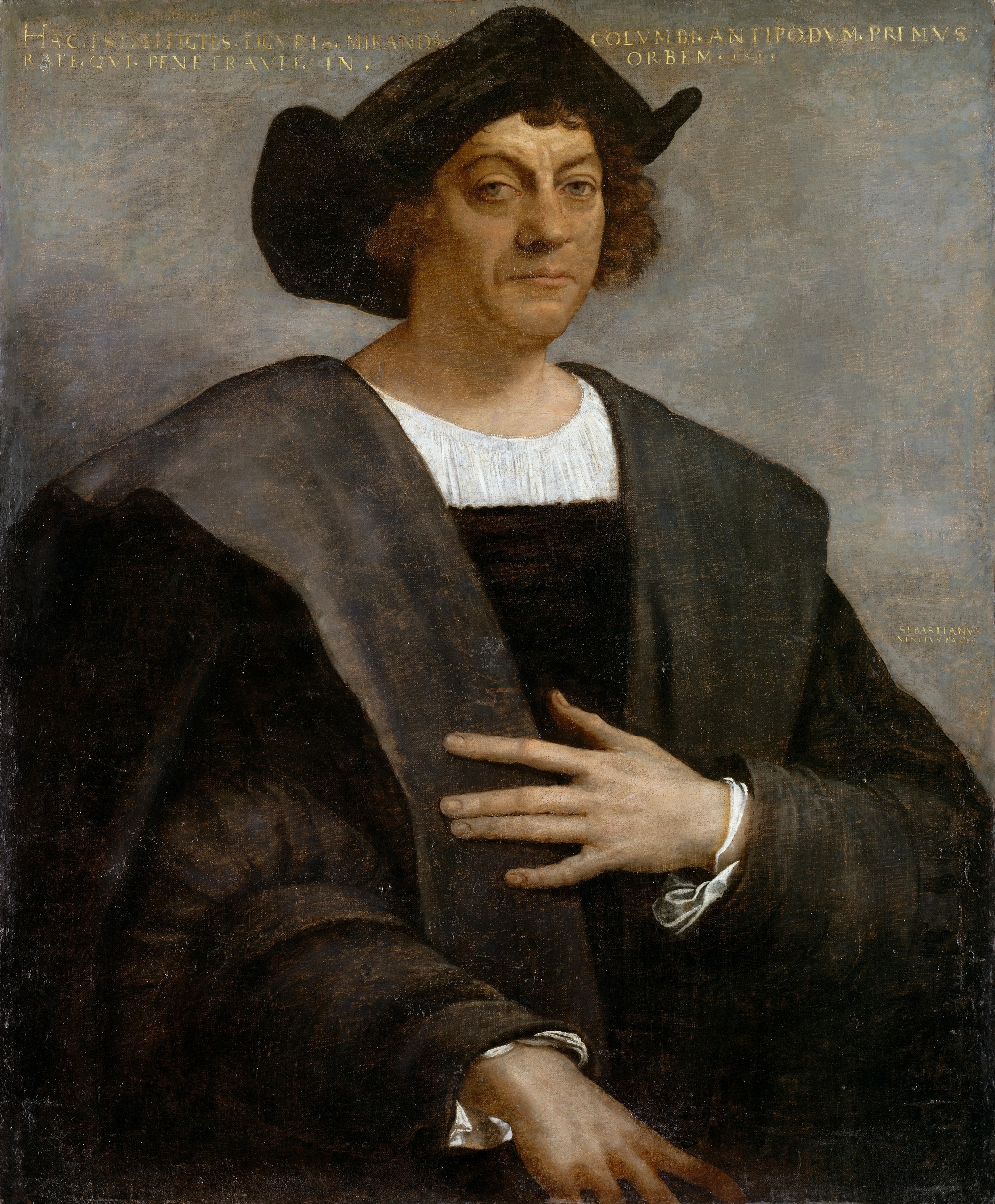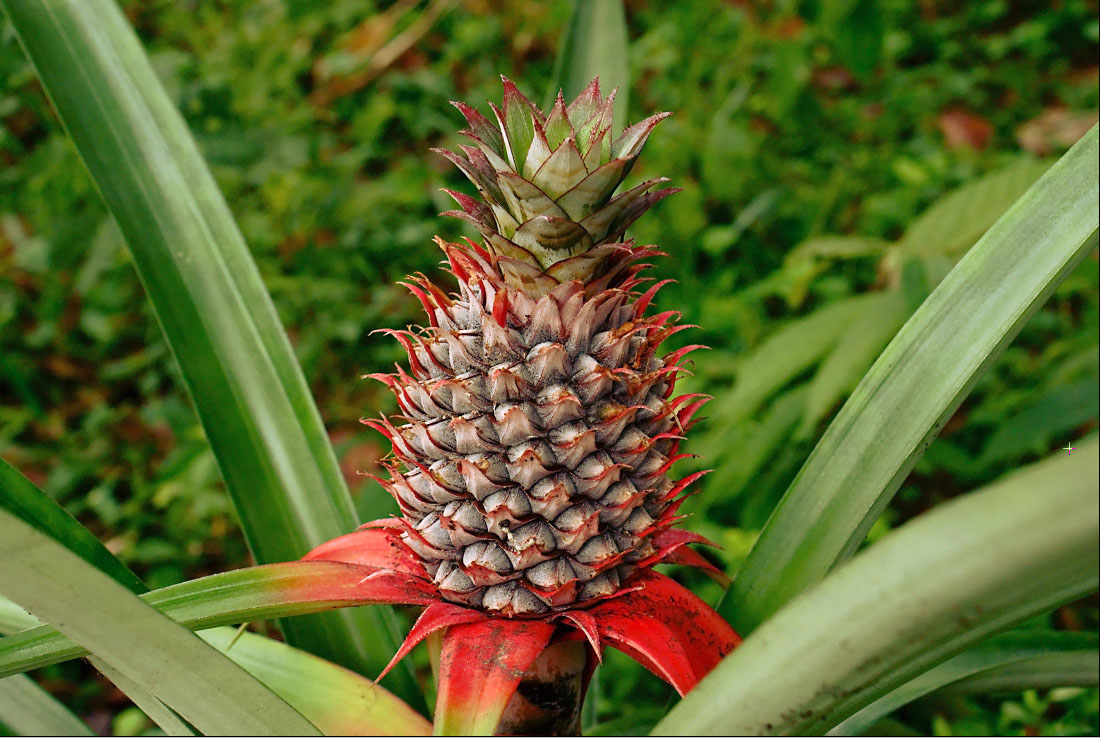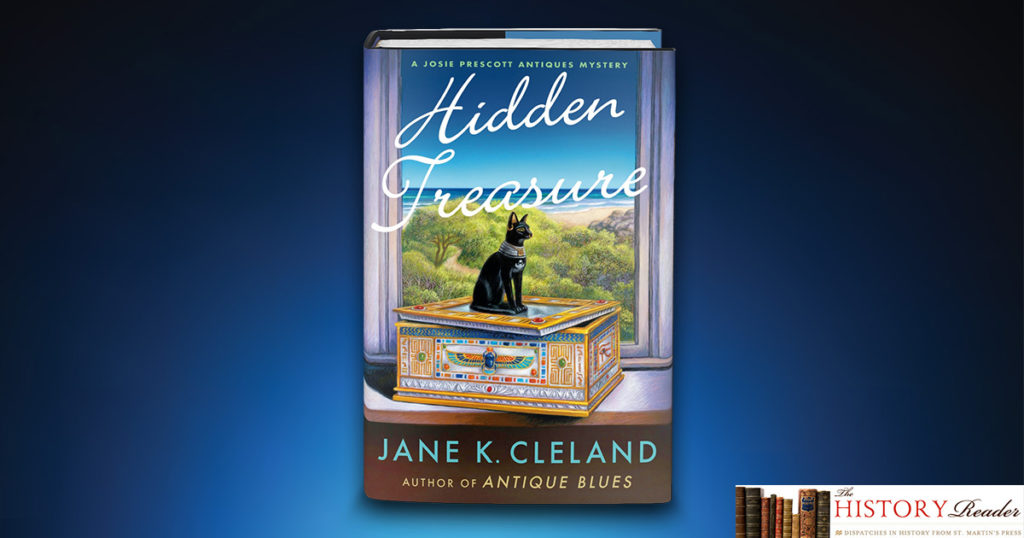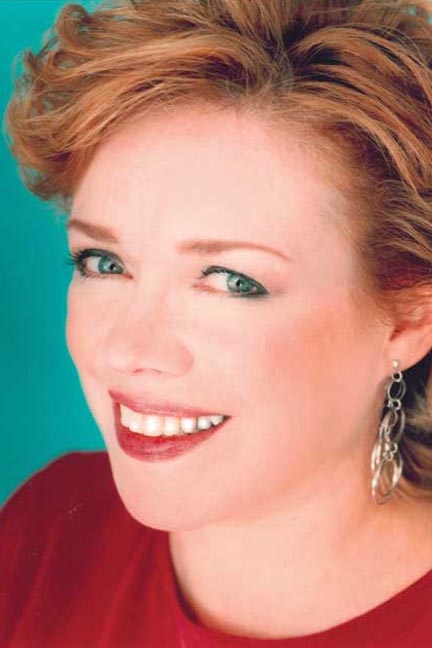by Jane K. Cleland
If you want to know about a society’s values, mores, and conventions, look to the decorative elements common during that era. Join Novelist Jane K. Cleland as she reflects on different objects from the past to better understand how people lived, the choices they made, and why.
Luxury in a Bite

This image is in the public domain via Wikicommons {{PD-US-expired}}.
When Christopher Columbus first tasted the spiky fruit with an outside like a pinecone and an inside like an apple in 1493 on a lush Caribbean island called Guadalupe, little did he know that the pineapple would become enduringly popular—and a symbol of luxury. In Europe and Colonial America, offering guests pineapple created a dual perception: that you could afford the extravagance and that you thought your guests were worth it. This perception persisted because the rarity and expense persisted. It took nearly two hundred years from when Columbus first lauded the pineapple for gardeners to master growing it in greenhouses.

This file is licensed under the Creative Commons Attribution 3.0 Unported license.
Because pineapples symbolized affluence and hospitality, the fruit became a favorite motif of architects and designers. You’ll find the image adorning restaurant and pub signs, castle turrets, serving dishes, and everything else that might be used to welcome guests, from the ornate to the utilitarian.
A Flicker of Love
From the 1600s through the 1800s, a father would use a candle to monitor how much time his daughter and her suitor could sit together. The candleholder was known as courting candle. A metal spiral surrounded a candle and could be raised or lowered depending on the father’s opinion of the man. When the candle burnt to the metal, the man had to leave. If the spiral was raised, the visit would be short. If the spiral was lowered, the visit would be longer. In addition to serving as a timekeeper, the courting candle also allowed the couple to gauge her father’s opinion of the suitor. Today the candles are used as decorative or emergency lighting—since the metal spiral holds the candle firmly in place, there’s less risk of it tipping over and starting a fire. Considering the courting candle’s original purpose enables us to enjoy a real-life example of what life must have been like for young women a few hundred years ago.
A Society in Flux
History is more than a timeline. Understanding the past by examining the objects people valued reveals the deeper story—the truth about history lies in the lives of the people who populated that world.
Read an excerpt from Jane K. Cleland’s upcoming release, Hidden Treasure, here!


Jane K. Cleland once owned a New Hampshire-based antiques and rare books business. She is the author of the Josie Prescott Antiques mysteries, has been a finalist for the Agatha, Macavity, and Anthony Awards, and won the Agatha Award for her books Mastering Suspense, Structure and Plot and Mastering Plot Twists. She has twice won the David Award for Best Novel. Jane is the former president of the New York chapter of the Mystery Writers of America and chairs the Wolfe Pack’s Black Orchid Novella Award. She is part of the fulltime English faculty at Lehman College and lives in New York City.
